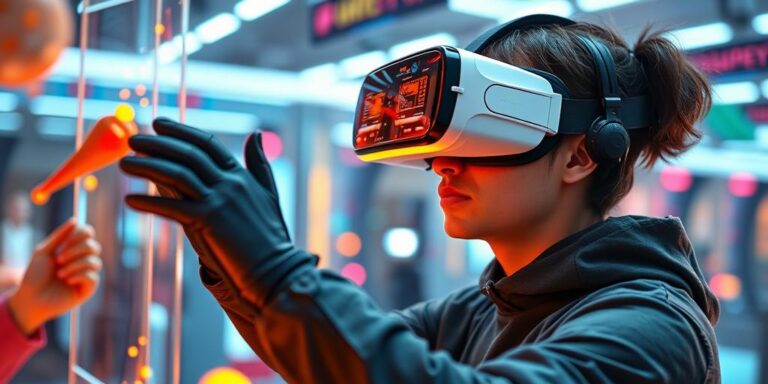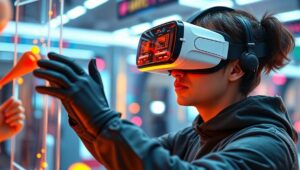The Future of VR: Photorealistic Metaverses and Haptic Feedback (2027)
Virtual Reality (VR) is rapidly evolving. By 2027, expect photorealistic metaverses and advanced haptic feedback to redefine digital experiences. This article explores these key advancements and their potential impact.
Photorealistic Metaverses: A Visual Revolution
The current generation of VR metaverses often suffers from cartoonish or stylized graphics due to technological limitations. In the next few years, significant advancements in rendering technology, driven by more powerful GPUs and sophisticated algorithms, will usher in an era of photorealistic metaverses.
- Real-time Ray Tracing: Expect widespread implementation of real-time ray tracing, simulating light behavior for unparalleled realism. Reflections, shadows, and global illumination will mimic the physical world with remarkable accuracy.
- Neural Rendering: AI-driven neural rendering techniques will reconstruct 3D environments from 2D images or sparse 3D data. This will allow for rapid creation of highly detailed and realistic virtual spaces.
- Procedural Generation: Advanced procedural generation algorithms will enable the creation of vast and diverse virtual environments with minimal manual effort. These environments will dynamically adapt and evolve, offering endless possibilities for exploration and interaction.
Haptic Feedback: Touching the Virtual World
While current VR systems offer basic haptic feedback through controllers, the future of VR hinges on advanced haptic technology that simulates realistic touch sensations. By 2027, expect the following:
- Exoskeleton Gloves: Lightweight and comfortable exoskeleton gloves will provide precise and nuanced haptic feedback, allowing users to feel the shape, texture, and weight of virtual objects.
- Full-Body Haptic Suits: Full-body suits will deliver immersive haptic experiences, enabling users to feel the impact of virtual interactions, such as receiving a hug or feeling the wind on their skin.
- Localized Haptic Devices: Smaller, localized haptic devices will integrate into VR headsets and peripherals, providing targeted feedback to specific body parts, such as facial expressions or subtle vibrations.
Impact and Applications
The convergence of photorealistic metaverses and advanced haptic feedback will unlock a wide range of applications across various industries.
- Entertainment: VR gaming will reach new levels of immersion, blurring the lines between the virtual and physical worlds. Imagine feeling the recoil of a virtual weapon or the texture of a virtual landscape.
- Education and Training: Realistic VR simulations will provide immersive and engaging training experiences for various professions, such as surgeons, engineers, and pilots. Trainees can practice complex procedures in a safe and controlled environment.
- Collaboration and Communication: Photorealistic avatars and realistic haptic feedback will enhance remote collaboration and communication. Virtual meetings will feel more natural and engaging, fostering stronger connections between remote team members.
- Healthcare: VR therapy will become more effective with realistic simulations and haptic feedback. Patients can overcome phobias, manage pain, and rehabilitate from injuries in a virtual environment.
Challenges and Considerations
Despite the immense potential, several challenges need to be addressed to realize the full vision of the future of VR.
- Computational Power: Rendering photorealistic environments and simulating complex haptic feedback requires significant computational power. Optimizing algorithms and developing more efficient hardware will be crucial.
- Latency: Minimizing latency between user actions and virtual responses is essential for creating a seamless and immersive experience. Low-latency tracking and rendering techniques will be critical.
- Cost: Making advanced VR technology accessible to a wider audience requires reducing the cost of hardware and software. Economies of scale and technological advancements will play a key role.
Conclusion
By 2027, photorealistic metaverses and advanced haptic feedback will transform VR into a truly immersive and transformative technology. These advancements will unlock new possibilities for entertainment, education, collaboration, and healthcare. Overcoming the remaining challenges will pave the way for a future where the boundaries between the physical and virtual worlds become increasingly blurred.




